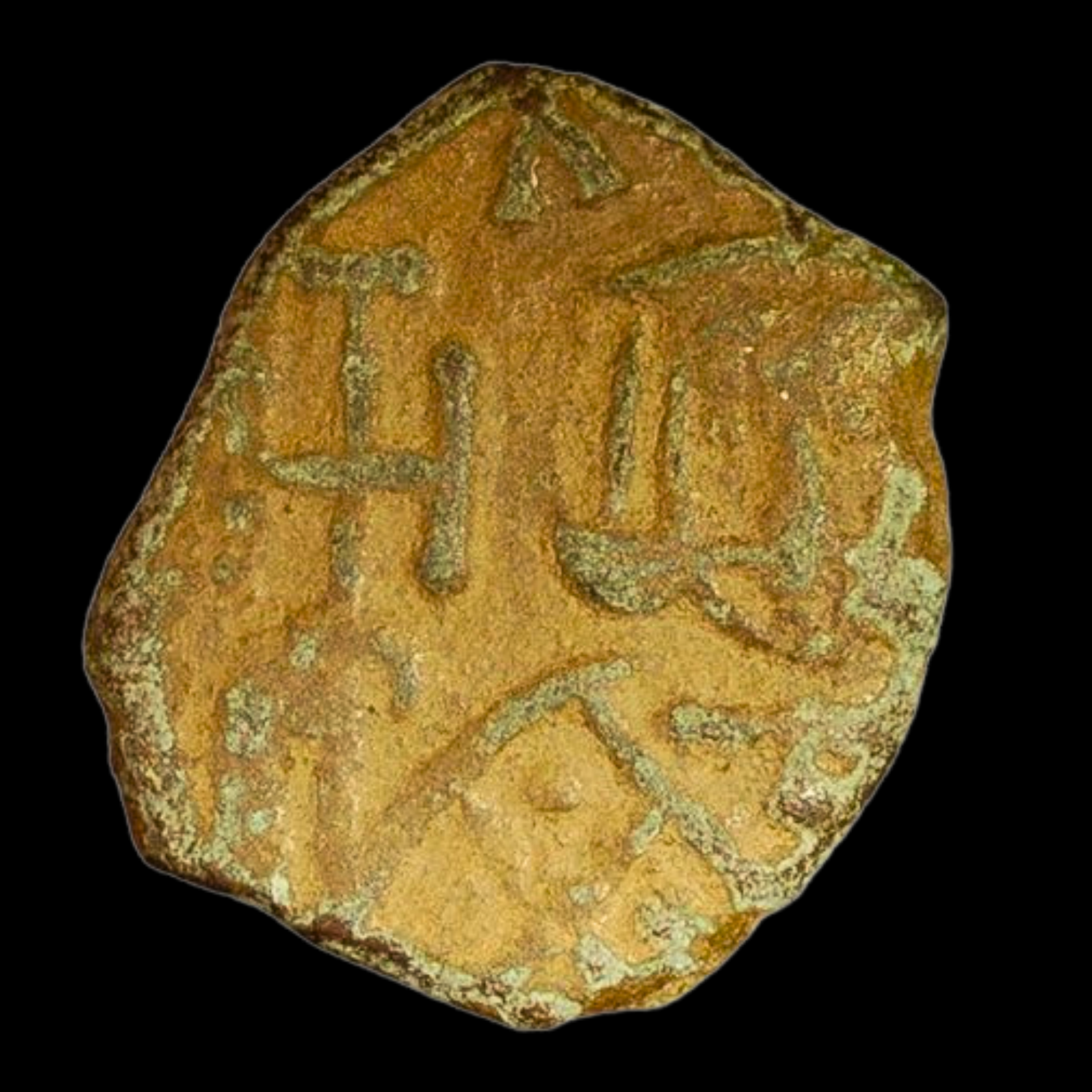 Image 1 of 2
Image 1 of 2

 Image 2 of 2
Image 2 of 2



Emperor Nicephorus I Bronze Follis from Byzantine Syracuse (about 1,215 years ago)
This coin is a Follis issued during the reign of Nicephorus I, who was emperor of the Byzantine Empire from 802 to 811 AD. It was struck in Syracuse, on the island of Sicily (modern Italy), a key Byzantine outpost in the central Mediterranean. The coin is a historical witness to the religious and political traditions of the Byzantine world.Coin
Description:
Front side: The obverse (front) features a facing bust of Emperor Nicephorus I with a short beard, wearing a crown and a decorated ceremonial robe called a loros. He holds a cross potent (a cross with crossbars at the ends), with “N” to the left and an abbreviation to the right.
Back side: The reverse (back) displays a facing bust of Stauracius, Nicephorus's son and a short-lived emperor, beardless and wearing a crown and cloak (chlamys). He holds a globus cruciger (a globe topped with a cross), with “C” to the left.
Technical Details:
Material composition: Bronze (AE, copper-alloy)
Denomination: Follis (a large bronze coin used in the Byzantine monetary system)Catalog/reference numbers: (Not specified in the references provided)
Date/period of minting: 802–811 AD
Historical Significance:
This coin highlights the importance of rulers presenting themselves together with their heirs in the art and coins of the Byzantine Empire, especially in Syracuse (now part of Sicily, Italy). It illustrates how religious and imperial symbols (like the cross and globus cruciger) reinforced the divine right of rulers. As a follis, this coin was a common currency in the Byzantine Empire, helping unify trade and government from the capital in Constantinople to distant outposts.
This coin is a Follis issued during the reign of Nicephorus I, who was emperor of the Byzantine Empire from 802 to 811 AD. It was struck in Syracuse, on the island of Sicily (modern Italy), a key Byzantine outpost in the central Mediterranean. The coin is a historical witness to the religious and political traditions of the Byzantine world.Coin
Description:
Front side: The obverse (front) features a facing bust of Emperor Nicephorus I with a short beard, wearing a crown and a decorated ceremonial robe called a loros. He holds a cross potent (a cross with crossbars at the ends), with “N” to the left and an abbreviation to the right.
Back side: The reverse (back) displays a facing bust of Stauracius, Nicephorus's son and a short-lived emperor, beardless and wearing a crown and cloak (chlamys). He holds a globus cruciger (a globe topped with a cross), with “C” to the left.
Technical Details:
Material composition: Bronze (AE, copper-alloy)
Denomination: Follis (a large bronze coin used in the Byzantine monetary system)Catalog/reference numbers: (Not specified in the references provided)
Date/period of minting: 802–811 AD
Historical Significance:
This coin highlights the importance of rulers presenting themselves together with their heirs in the art and coins of the Byzantine Empire, especially in Syracuse (now part of Sicily, Italy). It illustrates how religious and imperial symbols (like the cross and globus cruciger) reinforced the divine right of rulers. As a follis, this coin was a common currency in the Byzantine Empire, helping unify trade and government from the capital in Constantinople to distant outposts.









